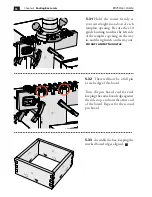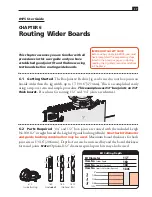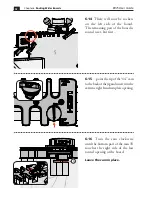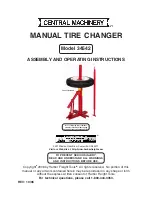
B975 User Guide
Chapter 5
Routing Box Joints
27
5-5
Board Width Selection
Board widths indicated in the chart will produce full size
pins and sockets at each board edge, for symmetrical or asymmetrical joints. Symmetrical
joint board widths may be reduced as required, resulting in smaller but equally sized pins
and sockets at each board edge. If board widths are reduced for asymmetrical joints, one
edge of the board will have a full size pin and socket while the other board edge will have
a smaller pin and socket. This may result in an unattractive joint.
IMPORTANT:
Read this chapter
before routing any boards.
5-6 Making a Box
Prepare
four similar boards 3/4" thick ×
5-3/16" wide by about 12" long
[19mm×133mm×305mm], and two
test boards, about 4"[100mm] wide
and the same thickness.
Note: Boards of different thicknesses
may also be joined.
Symmetrical
Asymmetrical
Full size
pins and sockets
Full size
pins and sockets
When a symmetrical board width is reduced,
the joint will have smaller, but equal sized
pins and sockets at each edge of the board.
Width specified in the board width chart
results in full size pins and sockets at each
edge of the board.
Width specified in the board width chart
results in a full size pin at one edge of the
board, and a full size socket at the other edge
of the board.
When an asymmetric board width is reduced,
the joint will have a full size pin and socket at
one edge of the board, and a reduced size pin
and socket at the other edge of the board.
When the board width is reduced further,
the result is very narrow and fragile pins at
each edge of the board.
When the board width is reduced further,
the result is a very narrow and fragile pin at
one edge of the board.
Small pins can break easily
Small pin
can break easily
Reduced size pins and sockets
Reduced size
pin and socket
















































